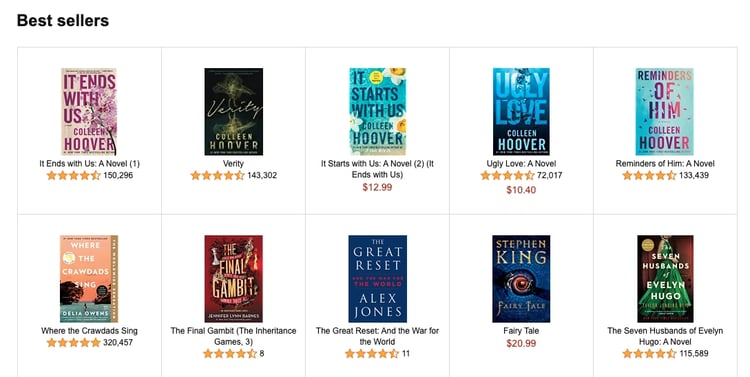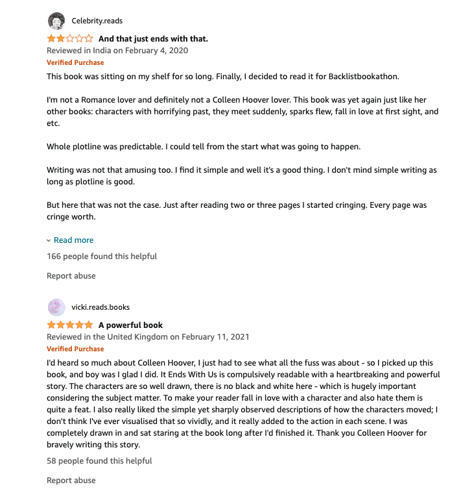4 Important Lessons Every New Retailer Can Learn From Amazon

Keep the good stuff coming
Subscribe to our blog newsletter and get monthly content that helps you manage product data smarter.
No spam. Just real value.
$469.82 billion.
That’s the total revenue Amazon generated in 2021, which is a 21.7% increase from the revenue it collected in 2020, and since becoming the third largest company in the world by revenue.
With these numbers in front of you, there’s no denying that Amazon is a thriving money-making machine. The marketplace dominates the entire ecommerce market, and there are various reports that prove this claim. A Future Shopper Report found that more than 63% of customers start their shopping journey on Amazon. That’s a massive percentage of the market when only 25% start at other online marketplaces and 33% go straight to retailer webshops. Statista further backs this up with data that shows that Amazon had about 2.4 billion site visits, both from desktop and mobile devices in May of this year. On top of that, Amazon has become the most visited ecommerce platform in the United States. Impressive, right?
It’s safe to say that Amazon is doing something right. Do you know what that tells us? That there are a lot of lessons and insights to learn from Amazon. So, in this article, we’ll get into what you can learn from this ecommerce giant.
1. Be customer obsessed
Amazon puts the customer first, always. Customer obsession is one of the brand’s main innovation principles. They explain that: “leaders start with the customer and work backward. They work vigorously to earn and keep customer trust. Although leaders pay attention to competitors, they obsess over customers.”
Now you’re wondering what “obsess over customers” means, right? Let’s break it down according to Amazon’s standards. It’s all about making the lives of your customers easier at every stage of their customer journey. That translates to:
Meaningful user experience
User experience encompasses everything involved in a customer’s interaction with your webshop. Do your website’s look and feel (design) encourage them to explore more? Does it offer them intuitive guidelines on where to go next (navigation)? Can they easily search and filter products to get to the one product they really want? Are there clear calls to action? Is the checkout process smooth? These kinds of questions will help you figure out how customers perceive your user experience.
Positive customer experience
Ecommerce customer experience should not be confused with user experience as it focuses on the overall experience customers have of your brand— starting with your website, products, and service. This relates to your brand reputation, if customers receive a great customer experience, they will rave about it to their family and friends, and online. The same can be said for when they receive a terrible customer experience. So, make sure that you meet your customers’ needs by serving them with care and kindness, and be sure to resolve issues swiftly.
Customer convenience
Being able to shop for “everything” under one digital roof is one of the reasons customers flock to Amazon. And while you don’t have to sell everything, everything you do sell should be available in stock with the right information attached to them — from sizes to price, etc. That eliminates frustrations and builds trust. But most importantly, a big part of Amazon’s convenience is the ability to deliver on time!
2. Get personal
It’s no secret that personalization is all the rage with modern customers. Data shows that 40% of customers find unpersonalized content exasperating, and 80% are more likely to buy from a brand that offers personalized experiences. This is proof that personalization is the ultimate secret weapon, and Amazon is the king of personalization.
Their personalization strategy revolves around product recommendations. Whenever a customer lands on Amazon.com, they’re presented with products that they may be interested in buying. This recommendation is based on their browsing and purchase history and habits. Recommendations can range from:
- Recommended for you
- Previously viewed products
- Frequently bought together
- Bestsellers
- Trending products
- What others (like you or in your area) are buying

3. Build a community
Community doesn’t happen on its own, you have to build it from the ground up. Amazon uses two specific ways to achieve this:
Customer product reviews
Nearly 93% of customers read product reviews to validate a purchase. You have to agree that this is a very high percentage of customers. But if this doesn’t do much to convince you, take this in: research has found that 79% of customers who specifically shop on Amazon are influenced to buy products thanks to the reviews that are available on the marketplace.
The customers that use product reviews to make purchase decisions will return with their own review, which will influence other prospective customers. This is how your customers communicate and help each other with buying decisions. That’s how the community around product reviews is built. If it works for Amazon, it can work for you too.

Subscriptions
Everyone knows about Amazon Prime, it’s like the exclusive club everyone wishes to be part of because of the perks it comes with. Research has it that there are over 200 million people across the globe that have an Amazon Prime subscription and over 157.4 million Amazon Prime users are in the United States alone. These are people who frequently shop from Amazon due to perks such as free shipping, same-day and next-day delivery options, in addition to discounts.
Not to mention that there’s a whole day dedicated to these subscription members, Amazon Prime Day. This is a day where they get to shop for items that have been sitting on their wish lists at a drop of a couple of dollars. It’s clear as day that subscriptions make Amazon tons of money, and they can do the same for you.
4. Use data for decision-making
Data can be your biggest conduit to success if you use it right. The best thing about data is that it removes you from guesswork and gives you information that you can use to improve your business operations and offerings.
Of course, you won’t get it right the first time and customer needs are ever-changing, so it’s all about continuous testing and implementation of new ideas. Amazon does the same thing. They test everything from their online shopping platform features to price structures to order fulfillment using data collected from customers, industry standards, and market trends.
The best place to start is your analytics tool to look at ecommerce metrics that tell you stories about your product performance and customer behavior. From there you can get into industry and market research. The most important thing is to get it right so that you can work with data you can trust.
Final thoughts
We’re not saying that these lessons will have you reaping Amazon revenue, but they will help you achieve your business goals. Many multichannel ecommerce businesses can tell you that ecommerce is not an easy journey, but with the right tips and tricks you can reach your bottom line goals. For an even smoother journey, you can consider investing in a product information tool.
This is a tool that centralizes all of your product information in a single location. But more than that, it helps you create error-free, accurate, up-to-date, and high quality product information. Plytix is a good example of PIM software that does this job. It’s a PIM for retailers like you, who need an automated product information management system that doesn’t cost you your whole annual revenue. It’s designed to meet the needs of small to medium-sized businesses hoping to thrive in ecommerce.
It can help you later on too, when you’re ready to expand and start selling on Amazon. You can use it to tweak your existing product data to meet Amazon’s requirements. On top of that, it enables you to do product listing optimization to rank higher and make more online sales on Amazon.
Here’s an extensive guide on how product listing optimization can help you rank high and sell more. To learn more about what a PIM tool can help you achieve, book a personalized demo with us, we’ll answer every question you might have.

What if your product data actually worked for you?
We’ll show you how Plytix helps you stop fixing data—and start using it.
Related posts
Keep the good stuff coming
Subscribe to our blog newsletter and get monthly content that helps you manage product data smarter.
No spam. Just real value.





Think others should see this?
Go ahead and share it.